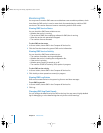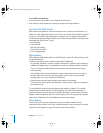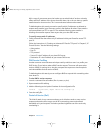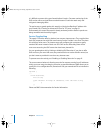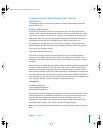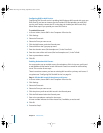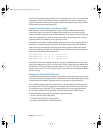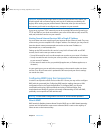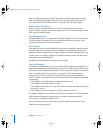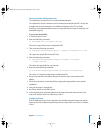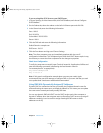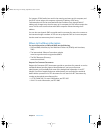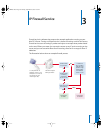
36 Chapter 2 DNS Service
Mac OS X’s Rendezvous feature allows you to use hostnames on your local subnet that
end with the “.local” suffix without having to enable DNS. Any service or device that
supports Rendezvous allows the use of user-defined namespace on your local subnet
without setting up and configuring DNS.
Network Load Distribution (aka Round Robin)
BIND allows for simple load distribution using an address-shuffling method called
round robin. You set up a pool of IP addresses for several hosts mirroring the same
content, and BIND cycles the order of these addresses as it responds to queries. Round
robin has no capability to monitor current server load or processing power. It simply
cycles the order of an address list for a given host name.
You enable round robin by adding multiple address entries in your zone data file for a
given host. For example, suppose you want to distribute web server traffic between
three servers on your network that all mirror the same content. Suppose the servers
have the IP addresses 192.168.12.12, 192.168.12.13, and 192.168.12.14. You would add these
lines to the zone data file db.example.com:
www.example.com 60 IN A 192.168.12.12
www.example.com 60 IN A 192.168.12.13
www.example.com 60 IN A 192.168.12.14
When BIND encounters multiple entries for one host, its default behavior is to answer
queries by sending out this list in a cycled order. The first request gets the addresses in
the order A, B, C. The next request gets the order B, C, A, then C, A, B, and so on. Notice
that the time-to-live (TTL) in the second column is set quite short to mitigate the effects
of local caching.
Setting Up a Private TCP/IP Network
If you have a local area network that has a connection to the Internet, you must set up
your server and client computers with IP addresses and other information that’s unique
to the Internet. You obtain IP addresses from your Internet service provider (ISP).
If it’s unlikely that your local area network will ever be connected to the Internet and
you want to use TCP/IP as the protocol for transmitting information on your network,
it’s possible to set up a “private” TCP/IP network. When you set up a private network,
you choose IP addresses from the blocks of IP addresses that the IANA (Internet
Assigned Numbers Authority) has reserved for private intranets:
• 10.0.0.0–10.255.255.255 (10/8 prefix)
• 172.16.0.0–172.31.255.255 (172.16/12 prefix)
• 192.168.0.0–192.168.255.255 (192.168/16 prefix)
LL2351.Book Page 36 Monday, September 8, 2003 2:47 PM



